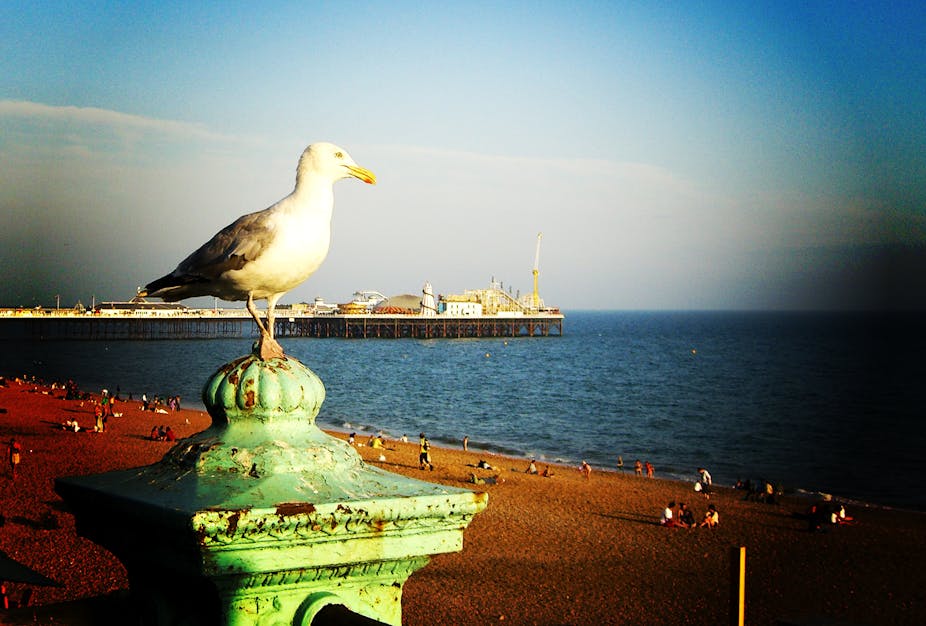Hot Seats is a series in which academics report from the UK’s most interesting marginal constituencies. Paul Webb and Pollyanna Ruiz look at three battles in the Brighton area.
Much of England’s south-east coast has traditionally been a Conservative fiefdom – and as things stand, most of it still is.
Of the 21 parliamentary constituencies along the coast from Thanet South to the mouth of the Test at Southampton, seven are currently held by non-Tory MPs. Eastbourne, Lewes and Eastbourne have Liberal Democrat MPs, while Mike Hancock, the independent incumbent for Portsmouth South, is a former Lib Dem. The two Southampton seats, Itchen and Test, are Labour-held, and Brighton Pavilion belongs to the Greens.
About half of these coastal seats are shaping up to be marginal contests in 2015. Labour is fighting to hold off Conservative challengers in both Southampton seats while simultaneously trying to wrest both Dover and Hastings & Rye away from the Tories. The Liberal Democrats hope Stephen Lloyd can hold on to Eastbourne, but Hancock’s determination to run again as an independent will make it hard for them to regain their former stronghold of Portsmouth South.
And then there’s Thanet South, which looked anything but marginal in 2010 but which is now a three-way contest between Labour, the Conservatives and UKIP thanks to the candidacy of Nigel Farage.
But if you’re looking for a real bellwether on the south coast, Brighton and Hove might be the place to watch.
Tricky triple
The Brighton area’s three seats have tended to change hands with new governments in recent decades, flipping to the Tories in 1992, to Labour in 1997, and in two cases back to the Conservatives in 2010. But 2010 also saw the Greens’ Caroline Lucas win her surprise victory in Pavilion, which reflected the electorate’s deep uncertainty about the two biggest parties and its growing openness to new ones.
All three seats are marginal. The Tories have a steep hill to climb to retain Kemptown and especially Hove, where Mike Weatherley’s departure will deprive them of any incumbency advantage. Lucas faces the tightest margin of the three, but her strong reputation as an engaging national figure and a dedicated constituency MP means that she will have a decent chance of holding off Labour despite the growing local unpopularity of the city’s Green-controlled council. She will also be assisted by a tremendous grassroots organisational effort.
Across the region, issues that are nationally prominent (the economy, the deficit, immigration, housing, health and education) have certainly all featured in constituency campaigns, albeit with distinctive local twists. Above all, this is true of health, where the performance and future of hospitals (in Brighton and Hove, the Royal Sussex County Hospital) is a particular concern. Immigration is relatively marginal, more of a feature of other seaside towns and ports which have experienced more significant inflows over the past decade.
Local issues such as traffic problems and controversial infrastructural projects such as the building of the massive i360 observation tower in Hove have provoked heated debate in Brighton.
A novel but interesting insight into the issue agendas of these constituencies is now being provided through a new analysis of social media activity that has been generated by researchers at the University of Sussex and Demos.
The man in the tweet
On the measure of social media, Green activists have been particularly assiduous tweeters in Brighton Pavilion and Hove, while Labour has the more active digital troops in Brighton Kemptown.
By a comfortable distance, health has been the biggest single issue for Brighton’s social media activists: some 16% of all tweets we examined concerned the NHS, with the environment a distant second on just 5%. The focus on these two areas has if anything been even more emphatic in neighbouring Hove, with health accounting for 20% of Tweets, and the environment 10%.

Much of the local traffic on Facebook that hasn’t come from the campaigns themselves has been negative about the mainstream parties, and the Conservatives in particular, but UKIP is getting a lot of flack too, despite its populist anti-mainstream stance.
And as they’re doing elsewhere, Brighton and Hove’s local activists are using online spaces to share information about subjects that they think aren’t being covered enough in the mainstream media.
Top of that list is housing and homelessness, which has been a serious problem in Brighton and Hove for a long time. Campaigners from community groups not aligned with any of the mainstream parties (such as Love Activists and Living Rent) have been using Facebook to organise supplies of food and sleeping bags for the homeless, and to interrogate manifesto pledges on housing, particularly the Tories’ promise to extend tenants’ right to buy social housing. They have also tried to mobilise attendance at local hustings.
Similarly, groups such as Coalition of Resistance: Can’t Pay, Won’t Pay, UK Uncut, and Sussex Defend Our NHS have all provided information about (and criticism of) austerity policies locally, while Hope Not Hate has worked to debunk Farage’s claims about foreigners using the NHS for HIV treatment.
Some of this activity undoubtedly reflects Brighton’s well-known tradition of socially liberal and leftist politics, but there’s a wider point here too. Social media is increasingly being used as a vital means of political engagement and mobilisation, particularly by candidates challenging incumbent MPs, by smaller parties, and by non-party grassroots activists.
For them, social media is a tool to undercut the traditional resource advantages of the mainstream political actors. And seats such as these, where highly involved and motivated activists can swing a marginal result with their hard work, means everyone concerned has all to play for.
Rosy Cobb also contributed to this article.

